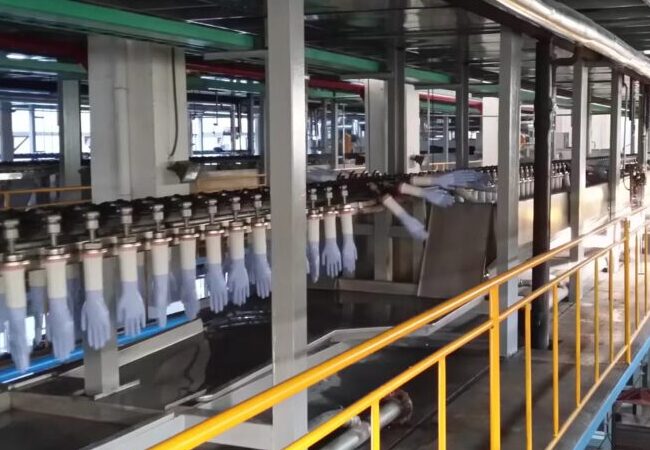The production equipment for disposable gloves includes machines and components for each process from raw material handling to finished product packaging. Fengwang provides full-line supply services, ensuring every machine meets customers’ production needs and technical standards.
Raw Material Processing
The first step in the production line involves raw material handling, requiring mixers and agitators to blend the glove materials thoroughly. When purchasing, consider the overall performance of the mixer or agitator, such as low energy consumption, high processing capacity, and excellent mixing uniformity.
Glove Forming Equipment
The forming equipment is the core of glove production, including molds and mold bases. When selecting forming equipment, choose the appropriate type based on the glove’s shape and size to ensure precision and production efficiency.
Vulcanization Equipment
The selection of vulcanization equipment should consider adjustments to the vulcanization formula, the impact of temperature and vulcanization time on the product, as well as energy efficiency and other factors.
Cooling Equipment
Cooling equipment is used to lower the temperature of vulcanized gloves to maintain their physical properties. Choose cooling equipment with low energy consumption and fast cooling speeds.
Glove Inspection Equipment
Inspection equipment includes pinhole detection, tensile testing, and visual inspection systems. Prioritize machines with high automation, precision, and efficiency.
Automatic Packaging Machines
These machines pack finished gloves into boxes, ensuring consistency and neatness during transportation. Opt for packaging machines with high automation, low failure rates, and fast packaging speeds.

Glove Machine Purchasing Process
Needs Analysis
Clearly define detailed production requirements, such as production capacity, product types, and process flow. Communicate with the production team to determine specific equipment parameters and basic requirements.
Market Research
Gather information on different suppliers’ product features, technical specifications, pricing, and after-sales service. Conduct thorough market research by attending industry exhibitions, networking with peers, and other methods.
Equipment Evaluation
Assess potential equipment based on production needs, including technical performance, production efficiency, energy consumption, footprint, and ease of operation. Evaluation methods include on-site inspections and sample testing.
Cost Analysis
Based on market research, conduct a comprehensive cost analysis, including daily operational costs, maintenance expenses, and procurement costs. Establish a scientific budget to select the most suitable supplier.
Decision & Procurement
Finalize negotiations with the supplier, proceed with the official purchase, and sign a contract specifying delivery time, installation, debugging, and after-sales service terms.



